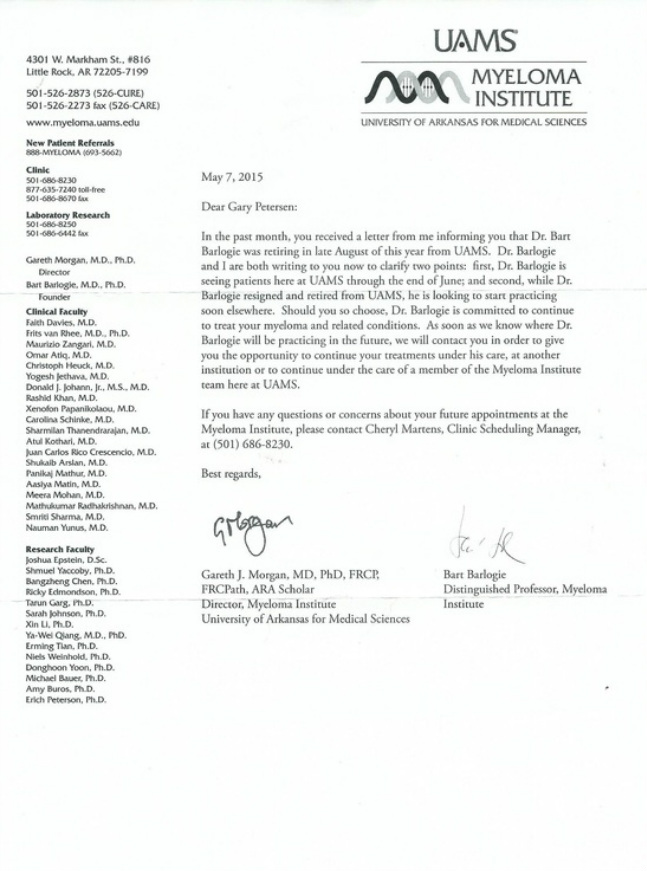I recently received a letter confirming that Dr. Bart Barlogie will not retire and ride off into the sunset with new leathers and a new limited edition Harley Hog. The official line is "While Dr. Barlogie resigned and retired from UAMS, he is looking to start practicing soon elsewhere." It seem so out of character for him to leave a practice he has nurtured from nothing to a world class organization, and sad to know there will be a UAMS without Dr. Barlogie. I am not privy to the goings on with the leadership of UAMS, however it looks to me like personalities and politics must have had a part to play. So now in the background you should be hearing the music by The Clash - Should I Stay or Should I Go? CLICK HERE for a listen as you read the letter below. That is a question each patient currently treated by Dr. Barlogie will have to make for themselves. For some it may be location, location, location. If he practices in Germany then my new doctor is Dr. Van Rhee, and if he moves to Jacksonville, where I live then it would be a no brainer. Nick Van Dyk does an outstanding job of going through the decision process that he will go through for his choice of treatment for the future. CLICK HERE to read it. After you read the letter I will let you know what I would love to see the good doctor do for his encore.
Good luck and may God Bless your Cancer Journey. For more information on multiple myeloma survival rates and treatments CLICK HERE and you can follow me on twitter at: https://twitter.com/grpetersen1



 RSS Feed
RSS Feed